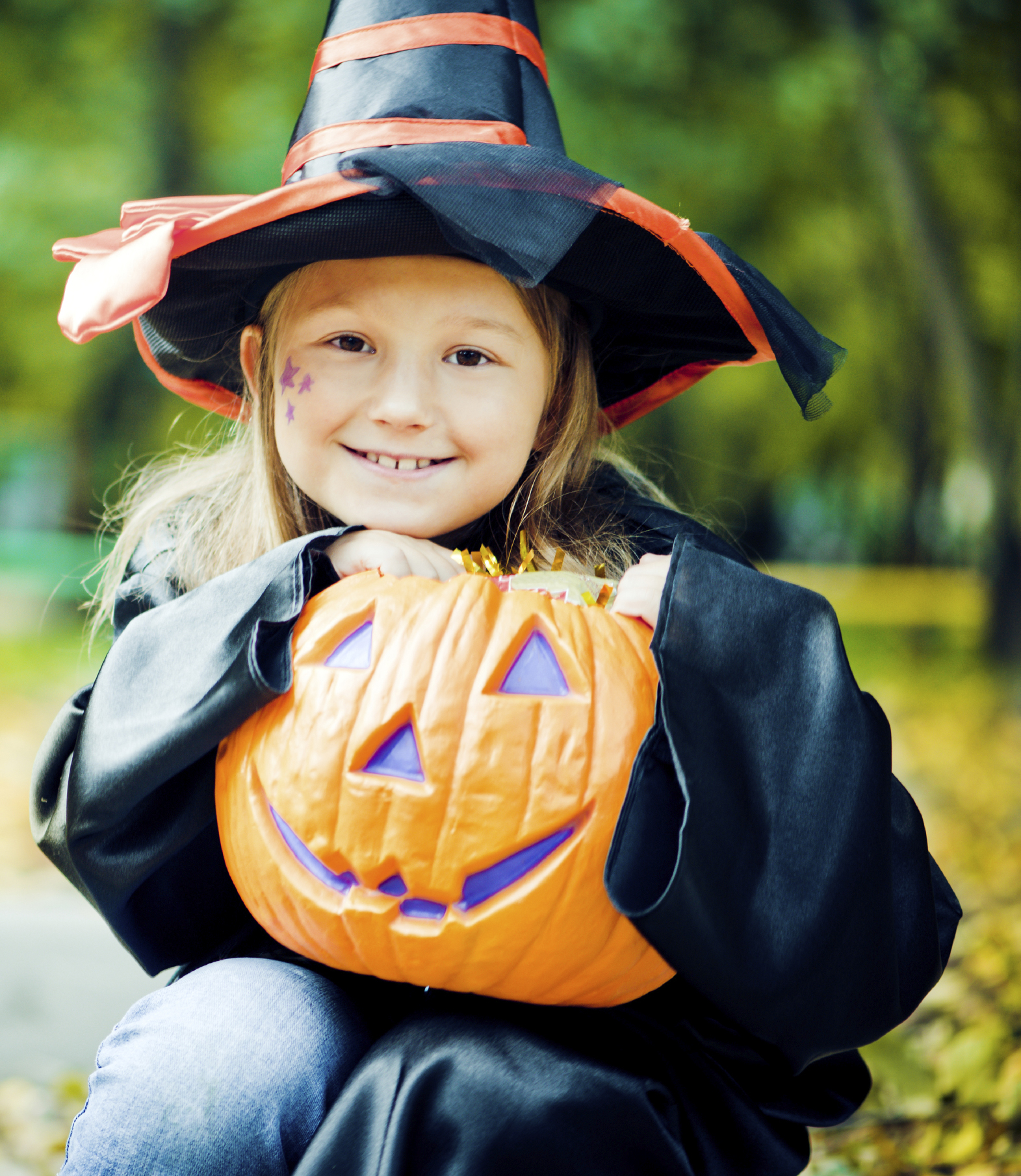 Halloween Safety Tips from Stony Brook Children’s Hospital
Halloween Safety Tips from Stony Brook Children’s Hospital
When it comes to Halloween, our doctors have seen it all — from allergic reactions to candy to traffic accidents. Most are preventable! Here’s their best advice to parents for Halloween health and safety.
Safety While Trick-or-Treating
Carl Kaplan, MD, Interim Chief, Division of Pediatric Emergency, suggests:
- Children trick or treating in groups including non-household members should wear masks covering their nose and mouth, but no mask should be constricting or obscure vision.
- Light colored costumes are most visible to vehicles but not for appropriate for your your little Darth Vaders or Black panthers…consider inexpensive reflective tape, glow-sticks, or glow-wear for darker costumed kids. Flashlights of some sort should be part of every villain or hero’s arsenal, to light the way, after dark.
- Make sure your children are aware of their surroundings and cross the street at corners or designated crosswalks.
- Check all the treats before letting your kids eat them. While tampering is rare, to be safe, throw out anything that is not sealed or a recognized brand.
Costume Checks
Jill Cioffi, MD, Pediatric Primary Care, suggests:
- Test face make-up on arms two to three days before Halloween to be sure it will not irritate the skin or cause an allergic reaction.
- As cool as they may look, do not allow your child to wear decorative contact lenses. They can impair vision or cause an infection. Worse, they may irritate the eye, which can then lead to an abrasion of the cornea.
- Make sure your child’s costume fits properly. A baggy costume that drags on the ground can cause your child to slip and fall.
- Also check to see if your child’s costume is flame resistant. Costumes that brush up against candles and candle-lit jack-o-lanterns (even flame resistant ones) can ignite and cause serious burns. For this reason, be sure to monitor your children around candle-lit lanterns and jack-o-lanterns in walkways and door entrances.
If Your Child Has Food Allergies…
Halloween can be a tricky time for children with food allergies. Susan Schuval, MD, Chief of Pediatric Allergy and Immunology, has thoughts on how to keep fun front and center, but allergic reactions at bay.
- Provide parental supervision at all times (while trick or treating and sorting the candy afterwards).
- Consider giving out non-food treats such as crayons, coloring books, pencils and stickers.
- Sign up for trick or treating for charity (UNICEF –UNICEF.USA.ORG) as an alternative.
- Carry emergency medications at all times (antihistamine/epinephrine autoinjector).
- Carry wet wipes to wipe your child’s hands while trick or treating.
- Check all ingredients. (Note: Ingredients may differ on treat-sized candy. Also, this candy may be made on different machinery.)
- Sort through and then swap candy you may be allergic to afterwards.
- Consider other activities besides trick or treating (for example, haunted houses or a movie).
- Check ingredients in face paint and makeup.
- Supply your own allergen-free home-baked goods or candy for parties.
- Consider participating in the “Teal Pumpkin Project,” a national campaign by Food Allergy Research & Education (FARE) to raise awareness of food allergies and promote inclusion of all trick-or-treaters. The idea is simple: putting a teal colored pumpkin outside your house to indicate that you offer non-food treats. Learn more about how you and your neighborhood can participate.
If Your Child’s Weight Is a Concern
Our Children’s Healthy Weight & Wellness Center, has some good news for kids who are obese or overweight. “Let them enjoy the day,” they say. They suggest allowing them to eat a reasonable amount of their candy (not the whole bag) the day of Halloween, then throw out or donate the rest of the candy the next day. Parents can also “buy back” the candy; i.e. offer money for each item or pound. It’s a win-win solution. The child doesn’t feel deprived but neither do they develop a daily candy habit in the days following Halloween.
Avoid Accidents at Home and On the Road
Erin Zazzera, Pediatric Trauma Nurse Coordinator, and Kristi Ladowski, Injury Prevention & Outreach Coordinator, offer these important tips for preventing accidents;
- Be very careful when carving pumpkins with small children. Or, enjoy painting the pumpkin instead!
- Use battery operated candles in pumpkins instead of candles with flames to avoid fires and burn injuries.
- When accompanying trick-or-treating children, stay vigilant. Put mobile phones away to ensure your eyes are on the little ones. Kids often trick-or-treat between 4-6 pm when it’s getting dark and people are coming home from work. Make sure to closely supervise children on the roads.
Have a safe and healthy Halloween!
Additional tips can be found on American Academy of Pediatrics (AAP) website.

